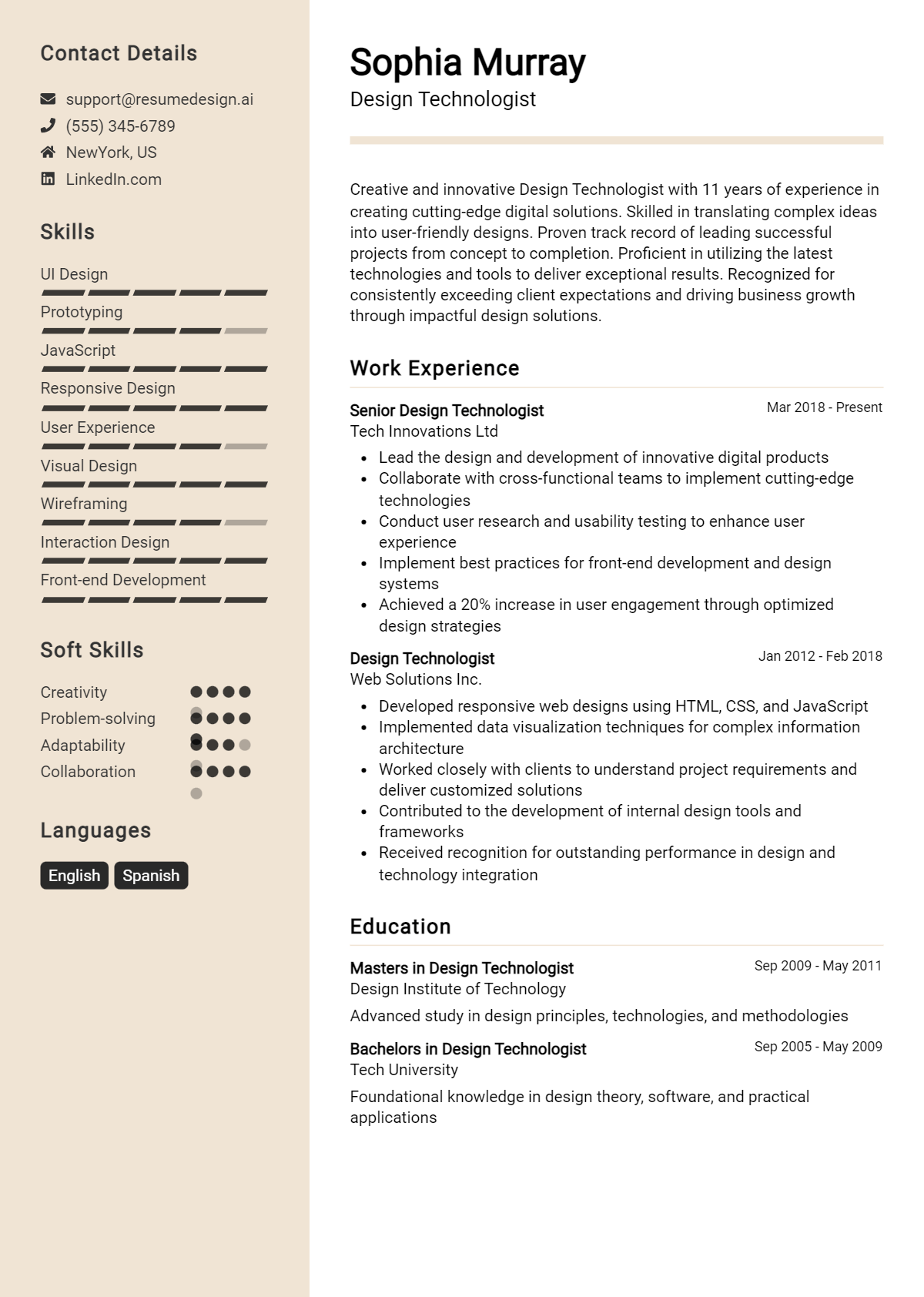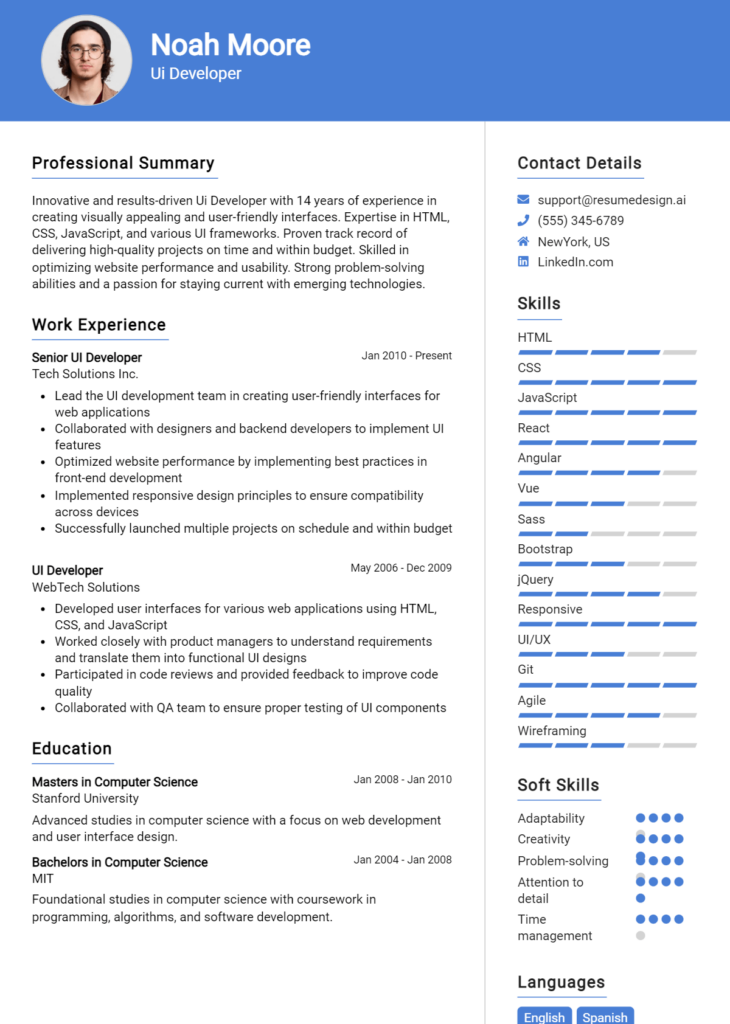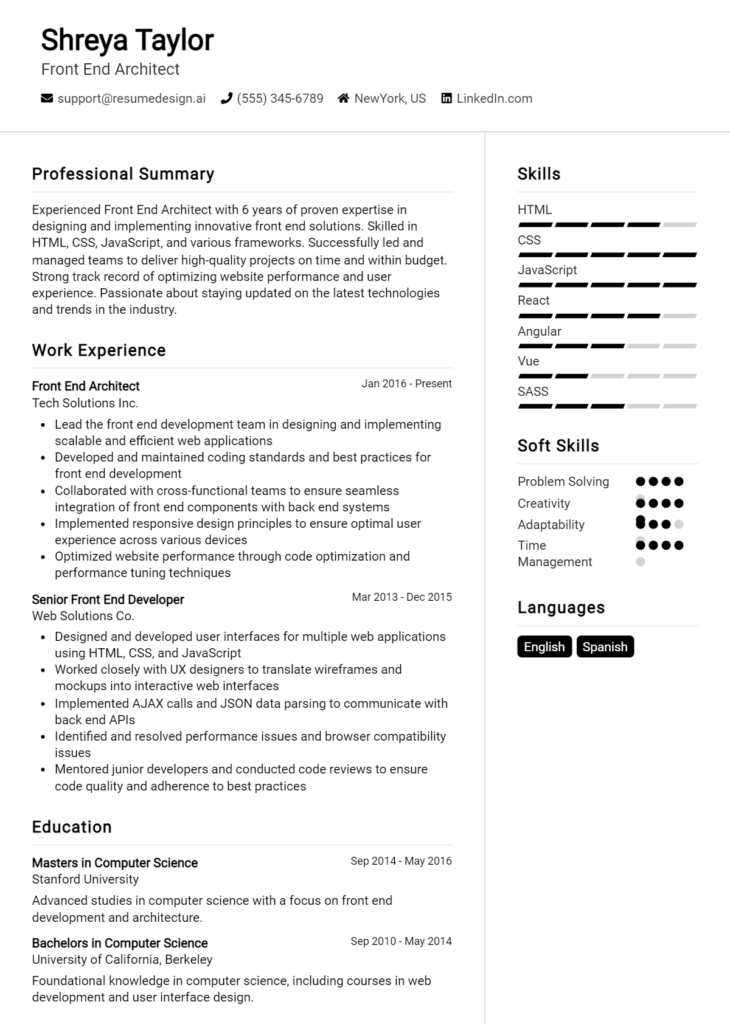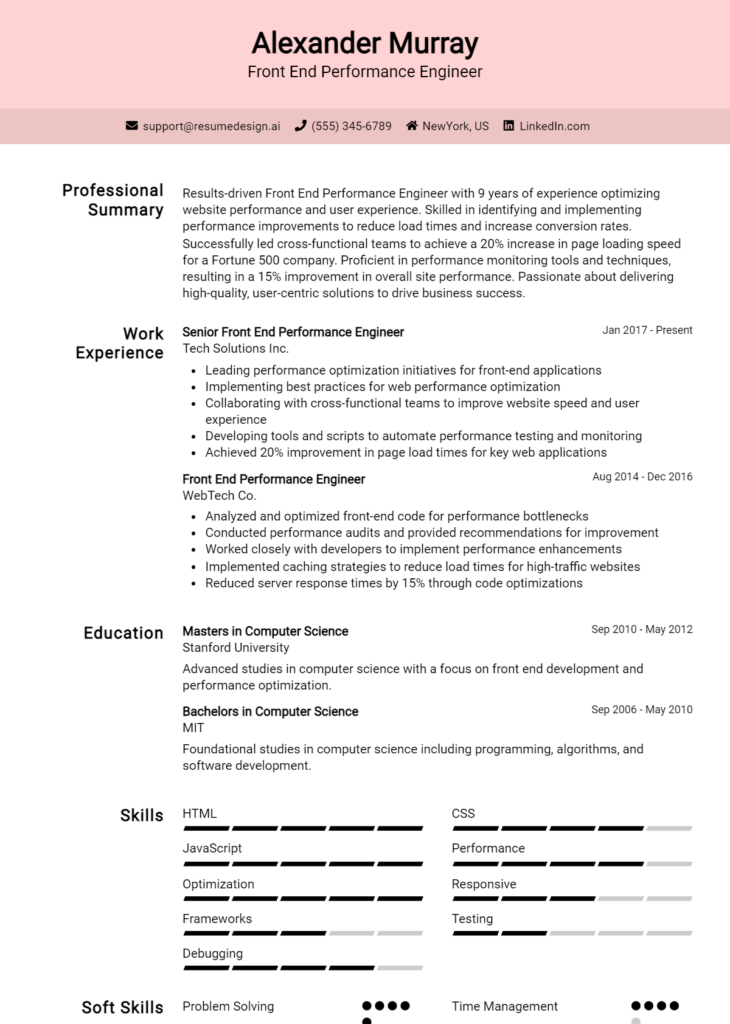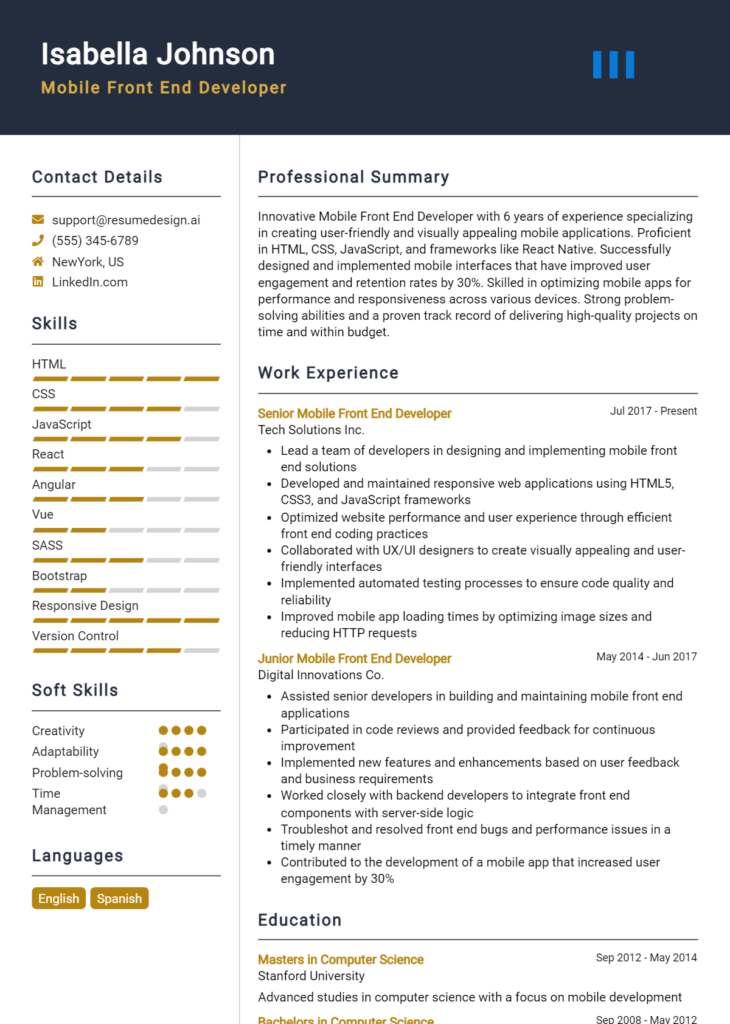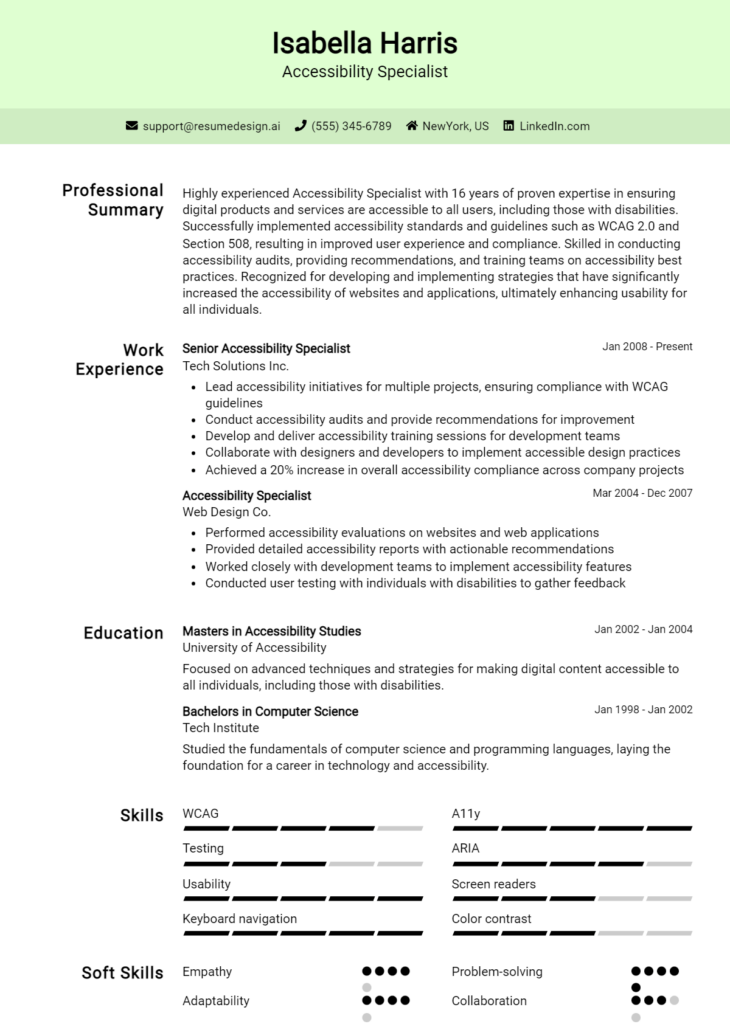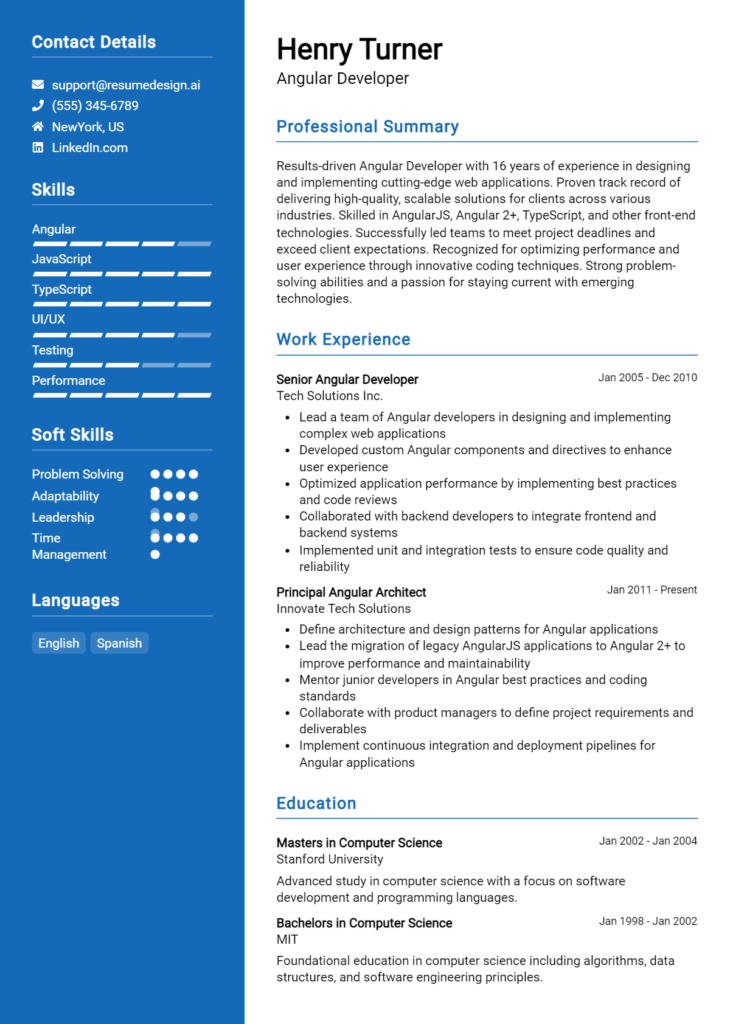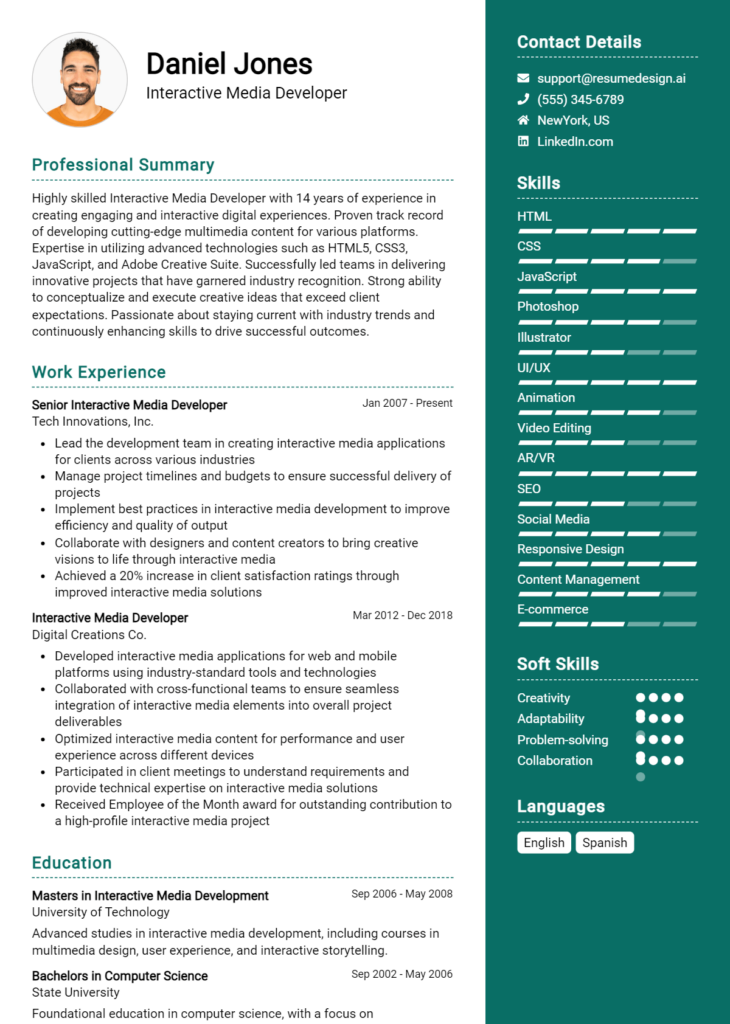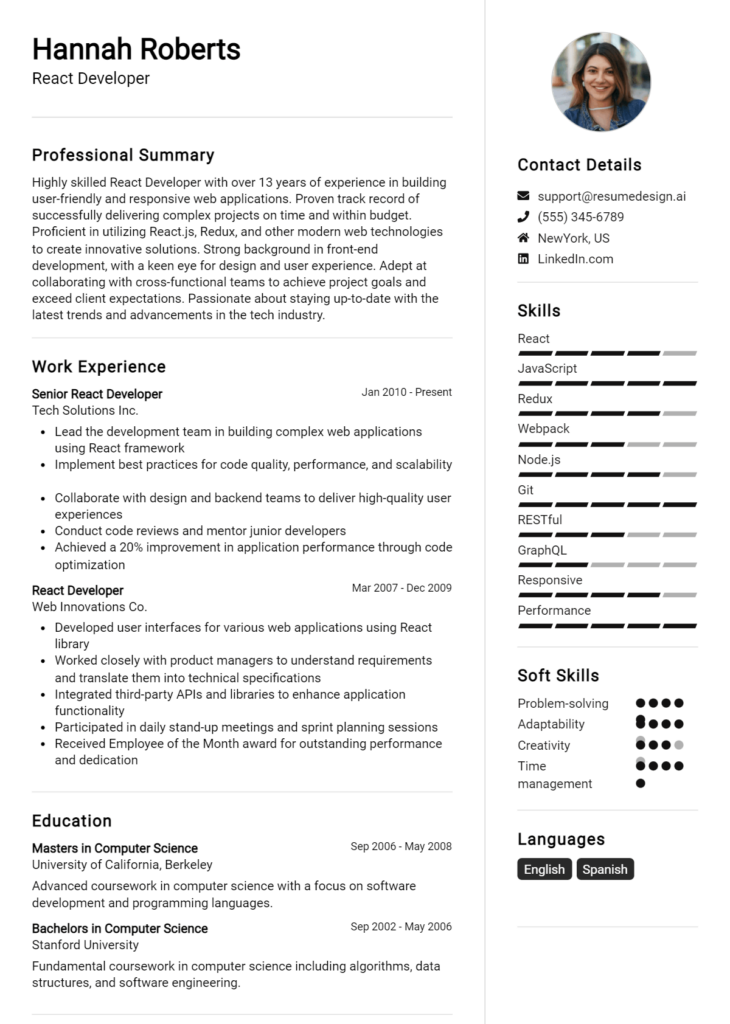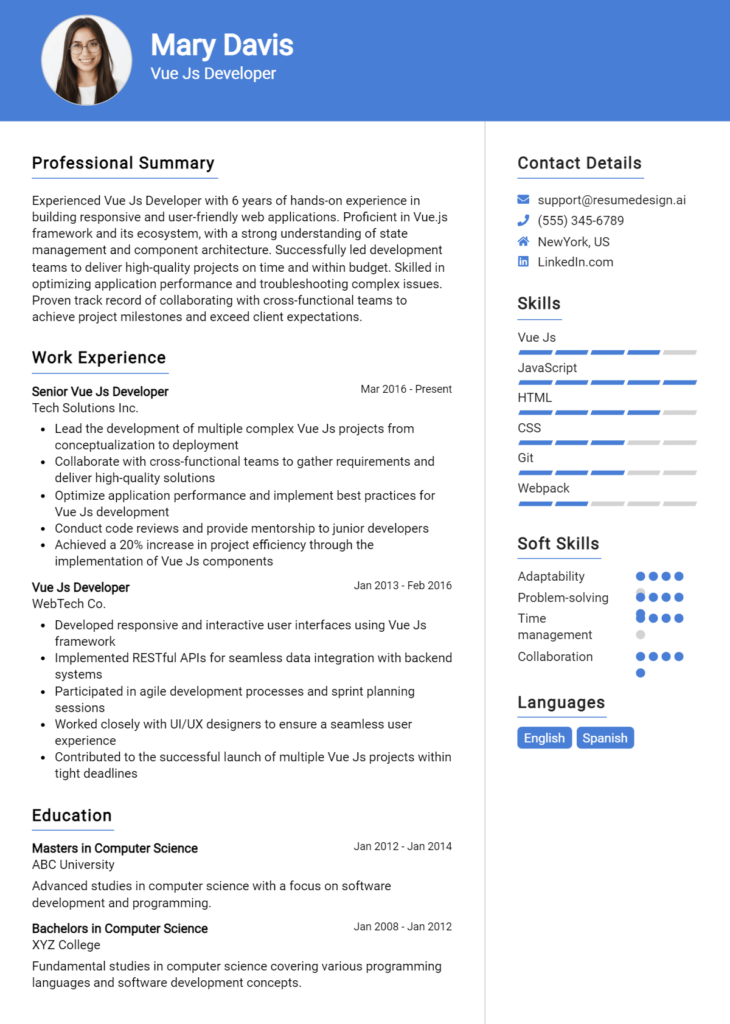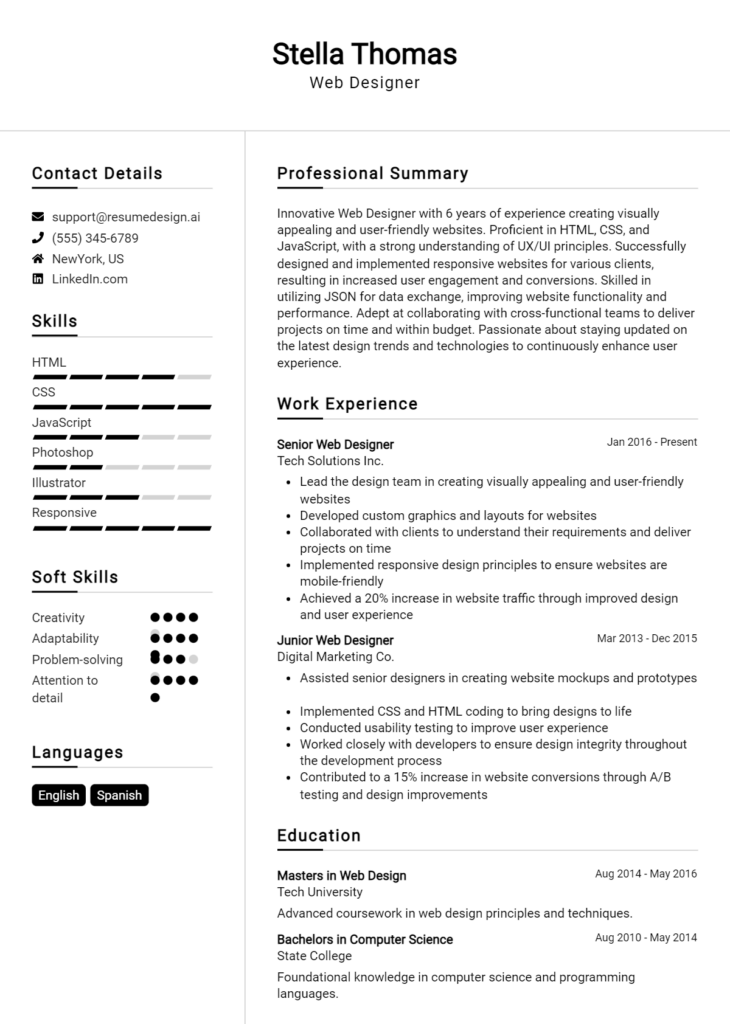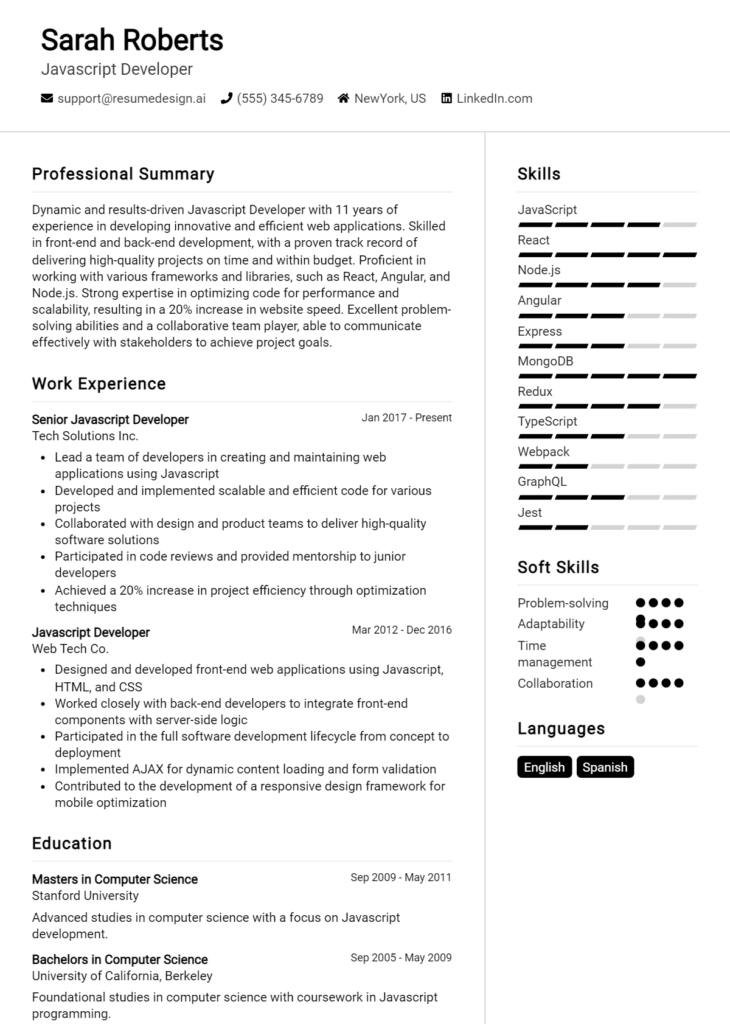Design Technologist Core Responsibilities
A Design Technologist plays a crucial role in bridging the gap between design and technology, collaborating with cross-functional teams to create innovative solutions. Key responsibilities include developing prototypes, conducting user testing, and ensuring design feasibility. Essential skills encompass technical proficiency, operational insight, and strong problem-solving abilities, enabling effective communication and collaboration across departments. These qualifications contribute to the organization's overall goals by fostering creativity and efficiency. A well-structured resume can effectively showcase these capabilities, enhancing career opportunities.
Common Responsibilities Listed on Design Technologist Resume
- Collaborate with designers and engineers to create functional prototypes.
- Conduct user research and usability testing to gather insights.
- Translate design concepts into technical specifications.
- Utilize design software and coding languages to develop interactive features.
- Maintain documentation for design processes and technical guidelines.
- Implement design systems to ensure consistency across products.
- Identify and troubleshoot design-related issues during development.
- Assist in project management and timeline tracking.
- Stay updated with industry trends and emerging technologies.
- Facilitate workshops and design sprints to foster innovation.
- Collaborate with marketing teams to ensure cohesive product messaging.
High-Level Resume Tips for Design Technologist Professionals
In the competitive field of Design Technology, a well-crafted resume can be the deciding factor between landing an interview and being overlooked. As the first impression a candidate makes on potential employers, the resume must not only showcase a range of technical skills and creative abilities but also effectively highlight achievements that demonstrate value. A strong resume serves as a personal branding tool that captures the essence of what a Design Technologist can bring to an organization. This guide will provide practical and actionable resume tips specifically tailored for Design Technologist professionals, helping candidates present their best selves to prospective employers.
Top Resume Tips for Design Technologist Professionals
- Tailor your resume to match the specific job description, using relevant keywords to pass through Applicant Tracking Systems (ATS).
- Highlight your design and technical skills prominently, ensuring they align with the requirements of the position.
- Showcase relevant experience by detailing projects that demonstrate your ability to integrate design with technology.
- Quantify your achievements wherever possible, using metrics to illustrate the impact of your work (e.g., increased user engagement by 30%).
- Include a portfolio link or a brief description of key projects that exemplify your design thinking and problem-solving skills.
- Emphasize collaboration and communication skills, as these are critical in multidisciplinary teams.
- Use action verbs to convey your contributions effectively and to create a dynamic tone throughout your resume.
- Keep the design of your resume clean and professional, ensuring it reflects your design sensibility while remaining easy to read.
- Consider adding a professional summary at the top that encapsulates your career goals and core competencies.
Implementing these tips can significantly enhance your chances of standing out in the Design Technologist job market. By presenting a tailored resume that effectively highlights your skills, achievements, and relevant experience, you increase your likelihood of catching the eye of hiring managers and securing interviews in this dynamic field.
Why Resume Headlines & Titles are Important for Design Technologist
In the competitive landscape of design technology, a well-crafted resume headline or title serves as an essential tool for candidates seeking to make a lasting impression. For a Design Technologist, the resume headline is not just a formality; it is the first opportunity to capture the attention of hiring managers. A strong headline can succinctly encapsulate a candidate's key qualifications, skills, and unique value proposition in one impactful phrase. It should be concise, relevant, and tailored directly to the specific job being applied for, ensuring that it resonates with the requirements of the role and stands out in a crowded field of applicants.
Best Practices for Crafting Resume Headlines for Design Technologist
- Keep it concise: Aim for a headline that is no longer than 10 words.
- Be role-specific: Include keywords that are relevant to the Design Technologist position.
- Highlight your unique value: Focus on what sets you apart from other candidates.
- Incorporate measurable achievements: Use quantifiable results to showcase your impact.
- Use industry-specific terminology: Familiarity with the language of the field demonstrates expertise.
- Maintain professionalism: Ensure the tone is appropriate for a professional setting.
- Align with the job description: Mirror the language used in the job posting to enhance relevance.
- Update regularly: Tailor your headline for each application to reflect the specific role.
Example Resume Headlines for Design Technologist
Strong Resume Headlines
Innovative Design Technologist Specializing in User-Centric Solutions
Results-Driven Design Technologist with 5+ Years in Agile Environments
Creative Design Technologist | Expert in Interactive Prototyping & UX Strategy
Lead Design Technologist with Proven Track Record in Cross-Functional Collaboration
Weak Resume Headlines
Design Technologist Looking for a Job
Experienced Professional in Design and Technology
The strong headlines are effective because they immediately convey specific skills, experience, and the candidate’s unique strengths, making them relevant and engaging to hiring managers. They utilize industry-specific language and highlight achievements, which helps in establishing credibility. Conversely, the weak headlines fail to impress due to their vagueness and lack of specificity. They do not provide any insight into the candidate's qualifications or unique contributions, making it difficult for hiring managers to see the value in the applicant.
Writing an Exceptional Design Technologist Resume Summary
A well-crafted resume summary is a critical component for a Design Technologist, as it serves as the first impression to hiring managers. This brief yet powerful section encapsulates your key skills, relevant experience, and notable accomplishments in a way that quickly captures attention. A strong summary should be concise and impactful, effectively highlighting how your background aligns with the specific requirements of the job you’re applying for. By tailoring your summary to the role, you not only showcase your qualifications but also demonstrate your genuine interest in the position, making it an essential tool in your job application arsenal.
Best Practices for Writing a Design Technologist Resume Summary
- Quantify Achievements: Use numbers and statistics to demonstrate your impact, such as project completion rates or user satisfaction scores.
- Focus on Key Skills: Highlight the most relevant technical and soft skills that match the job description.
- Tailor for the Job Description: Customize your summary for each application, reflecting the specific requirements and preferences outlined in the job posting.
- Be Concise: Keep your summary brief, ideally within 2-4 sentences, to maintain the hiring manager's interest.
- Use Action Verbs: Start sentences with strong action verbs to convey confidence and proactivity.
- Highlight Industry Experience: Mention any relevant experience in the design technology field to establish credibility.
- Showcase Collaboration: Emphasize your ability to work with cross-functional teams, as collaboration is often key in design roles.
- Convey Passion: Infuse your summary with a sense of enthusiasm for design technology, showcasing your commitment to the field.
Example Design Technologist Resume Summaries
Strong Resume Summaries
Dynamic Design Technologist with 5+ years of experience in creating user-centered digital products, resulting in a 30% increase in user engagement for key projects. Proficient in Figma, Sketch, and Adobe Creative Suite, with a strong focus on UX/UI design principles.
Innovative Design Technologist with a proven track record of leading cross-functional teams to deliver high-quality design solutions. Successfully revamped an e-commerce platform, increasing conversion rates by 25% within six months. Expert in responsive design and accessibility standards.
Results-driven Design Technologist with extensive experience in prototyping and user testing. Spearheaded a redesign project that enhanced user satisfaction ratings by 40%, employing a data-driven approach to design decisions. Strong skills in HTML, CSS, and JavaScript.
Weak Resume Summaries
Creative individual looking for a position in design technology. Have worked on various projects and enjoy designing.
Design Technologist with experience in different areas. I am passionate about design and eager to contribute to a team.
The strong resume summaries are effective because they provide specific examples of achievements, quantify their impact, and directly relate to the skills and experiences relevant to the role of a Design Technologist. In contrast, the weak resume summaries lack detail and specificity, making them generic and less compelling, failing to convey the candidate's true capabilities or the value they can bring to a potential employer.
Work Experience Section for Design Technologist Resume
The work experience section of a Design Technologist resume is critical as it serves as a comprehensive showcase of a candidate's technical skills, leadership capabilities, and the quality of products they've successfully delivered. This section not only highlights the specific technologies and design methodologies employed but also demonstrates the ability to manage teams effectively and drive projects to completion. Quantifying achievements—such as improved user engagement metrics or reduced production times—enhances the credibility of the experience. Additionally, aligning past roles and responsibilities with industry standards helps potential employers recognize the candidate's suitability for the position.
Best Practices for Design Technologist Work Experience
- Use specific metrics to quantify results achieved in previous roles.
- Highlight relevant technical skills and tools used in projects.
- Emphasize collaboration with cross-functional teams, including designers, developers, and stakeholders.
- Detail leadership experiences, including mentoring junior team members or leading project initiatives.
- Align job responsibilities with industry best practices and trends.
- Focus on outcomes over tasks to demonstrate impact and effectiveness.
- Utilize action verbs to convey a sense of proactivity and initiative.
- Tailor the section to reflect the specific requirements of the job being applied for.
Example Work Experiences for Design Technologist
Strong Experiences
- Led a team of 5 designers and developers to redesign a mobile application, resulting in a 40% increase in user engagement and a 25% decrease in customer support queries.
- Implemented a new design system that streamlined the development process, reducing the average project turnaround time by 30%.
- Collaborated with cross-functional teams to launch a product feature that increased revenue by $500,000 within the first quarter of release.
- Mentored junior designers, fostering skills in user-centered design practices, which improved team performance metrics by 20%.
Weak Experiences
- Worked on various design projects without specifying outcomes or technologies used.
- Assisted in team meetings and contributed ideas occasionally.
- Involved in the development process but did not indicate any specific achievements or improvements.
- Participated in user testing sessions with no measurable impact reported.
The examples provided illustrate a clear distinction between strong and weak experiences. Strong experiences are characterized by quantifiable outcomes, clear technical leadership, and successful collaboration with teams, making them impactful and relevant to potential employers. In contrast, weak experiences lack specificity and measurable results, failing to convey the candidate's contributions and effectiveness in their previous roles.
Education and Certifications Section for Design Technologist Resume
The education and certifications section of a Design Technologist resume is crucial as it showcases the candidate's academic background and commitment to professional development. This section serves to highlight relevant degrees, industry-recognized certifications, and any specialized training that underscores the candidate's expertise in design technology. By providing details on relevant coursework and certifications, candidates can greatly enhance their credibility and alignment with the job role, demonstrating not only their foundational knowledge but also their ongoing pursuit of skills essential for success in the ever-evolving design landscape.
Best Practices for Design Technologist Education and Certifications
- Include only relevant degrees and certifications that pertain directly to design technology.
- Use clear and concise descriptions for each entry, including the degree or certification, institution, and date obtained.
- Highlight advanced or industry-recognized credentials that showcase specialized knowledge or skills.
- Incorporate any relevant coursework that aligns with the job requirements, demonstrating applied knowledge.
- List certifications that are current and widely recognized within the industry.
- Consider including professional development courses or workshops that reflect a commitment to continuous learning.
- Organize this section in reverse chronological order to emphasize recent achievements.
- Tailor the content to the specific job description, emphasizing qualifications that match the employer's needs.
Example Education and Certifications for Design Technologist
Strong Examples
- Bachelor of Fine Arts in Graphic Design, University of California, 2020
- Certified UX Designer, Nielsen Norman Group, 2021
- Advanced Certificate in Interaction Design, New York School of Design, 2022
- Relevant Coursework: Human-Computer Interaction, User Research Methods, Visual Design Principles
Weak Examples
- High School Diploma, Local High School, 2015
- Certification in Microsoft Office Suite, 2019
- Online Course in Basic Painting Techniques, 2020
- Degree in History, Some University, 2018
The strong examples are considered effective because they directly relate to the field of design technology, showcasing relevant degrees and certifications that add value to the candidate's profile. These qualifications reflect both foundational education and specialized training, enhancing the candidate's appeal to potential employers. Conversely, the weak examples demonstrate a lack of relevance to the design technologist role, featuring outdated or unrelated qualifications that do not support the candidate's alignment with industry expectations or job requirements.
Top Skills & Keywords for Design Technologist Resume
In the competitive field of design technology, having a well-crafted resume is crucial for standing out to potential employers. One of the most significant elements of a Design Technologist resume is the inclusion of relevant skills. Skills not only showcase your technical capabilities but also highlight your ability to collaborate and communicate effectively within teams. A balanced mix of hard and soft skills can demonstrate your versatility and readiness to tackle the demands of the role. In this context, it's essential to focus on key skills that align with the job description and industry standards, ensuring your resume reflects both your technical prowess and interpersonal qualities.
Top Hard & Soft Skills for Design Technologist
Soft Skills
- Creative Problem Solving
- Team Collaboration
- Effective Communication
- Adaptability
- Time Management
- Critical Thinking
- Attention to Detail
- User-Centered Mindset
- Empathy
- Leadership Skills
Hard Skills
- Proficiency in Design Software (e.g., Adobe Creative Suite, Sketch)
- Knowledge of HTML/CSS/JavaScript
- Experience with Prototyping Tools (e.g., Figma, InVision)
- Familiarity with User Experience (UX) Principles
- Graphic Design Skills
- Understanding of Responsive Design
- Data Visualization Techniques
- Familiarity with Agile Methodologies
- Basic Understanding of SEO Principles
- Experience with Accessibility Standards
For more insights on how to effectively highlight your skills and present your work experience, ensure your resume captures the essence of your qualifications as a Design Technologist.
Stand Out with a Winning Design Technologist Cover Letter
I am excited to apply for the Design Technologist position at [Company Name], as advertised on [Job Board/Company Website]. With a solid foundation in both design and technology, I am passionate about creating user-centered solutions that not only meet business objectives but also enhance the overall user experience. My unique blend of skills in design thinking, coding, and prototyping positions me as a strong candidate for this role, and I am eager to contribute to your team’s innovative projects.
In my previous role at [Previous Company Name], I successfully collaborated with cross-functional teams to develop and implement interactive prototypes that aligned with user needs and business goals. My experience with tools such as Sketch, Figma, and Adobe Creative Suite, combined with my proficiency in HTML, CSS, and JavaScript, has allowed me to bridge the gap between design and development effectively. I thrive in fast-paced environments, where my ability to iterate quickly and gather feedback can lead to impactful design solutions that resonate with users.
I am particularly impressed with [Company Name]'s commitment to innovation and its focus on creating products that prioritize user experience. I believe my approach to design, which emphasizes empathy and user research, aligns perfectly with your mission. I am eager to bring my expertise in creating seamless digital experiences to your talented team and help elevate your design processes to new heights.
Thank you for considering my application. I look forward to the opportunity to discuss how my background in design and technology can contribute to the exciting projects at [Company Name]. I am enthusiastic about the chance to collaborate with your team and help shape the future of your products.
Common Mistakes to Avoid in a Design Technologist Resume
When crafting a resume for a Design Technologist position, it's crucial to present your skills and experiences in a way that resonates with potential employers. However, many candidates make common mistakes that can undermine their chances of landing an interview. By avoiding these pitfalls, you can enhance the effectiveness of your resume and showcase your unique qualifications. Here are some of the key mistakes to watch out for:
Vague Job Descriptions: Failing to provide specific details about your previous roles can make it hard for employers to understand your contributions and expertise. Be precise about your responsibilities and the impact of your work.
Overloading with Technical Jargon: While technical skills are important, using too much jargon can alienate hiring managers who may not be familiar with every term. Use clear language that highlights your skills without overwhelming the reader.
Ignoring Design Principles: As a Design Technologist, your resume should reflect good design practices. Poor layout, inconsistent fonts, or overcrowded text can make it difficult to read and detract from your professional image.
Lack of Quantifiable Achievements: Simply listing duties without quantifying your achievements makes it harder to illustrate your impact. Include metrics or outcomes that demonstrate how your work benefited your previous employers.
Neglecting Soft Skills: Technical skills are vital, but soft skills like communication, teamwork, and problem-solving are equally important. Be sure to highlight these attributes, as they are crucial for collaboration in design teams.
Using a Generic Template: A one-size-fits-all resume can signal a lack of effort or interest in the specific role. Customize your resume for each application to reflect the requirements and culture of the company.
Failing to Showcase Portfolio Work: As a Design Technologist, your portfolio is a critical component of your application. Make sure to include links or references to your work that demonstrate your capabilities and creativity.
Spelling and Grammar Errors: Typos and grammatical mistakes can create a negative impression and suggest a lack of attention to detail. Always proofread your resume and consider having someone else review it before submission.
Conclusion
In this article, we explored the multifaceted role of a Design Technologist, emphasizing the blend of design and technology required to create innovative solutions. Key responsibilities include collaborating with cross-functional teams, prototyping, and ensuring a seamless user experience. We also highlighted the importance of staying updated with emerging technologies and design trends to maintain a competitive edge in the industry.
As you reflect on your career as a Design Technologist, it’s crucial to have a resume that showcases your unique skills and experiences effectively. A well-crafted resume can make a significant difference in standing out to potential employers.
We encourage you to take the time to review and enhance your Design Technologist resume. Consider utilizing resources like resume templates, which can provide a professional layout. A resume builder can simplify the process, allowing you to focus on content rather than formatting. Additionally, looking at resume examples can inspire you and help you identify key elements to include. Don't forget the importance of a strong introduction; our cover letter templates can help you make a compelling case for your candidacy.
Take action today—revamp your resume and position yourself for success in the exciting field of design technology!

